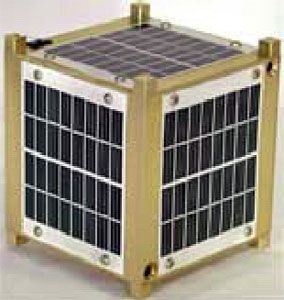Voyager (original) (raw)

Home - Search - Browse - Alphabetic Index: 0- 1- 2- 3- 4- 5- 6- 7- 8- 9
A- B- C- D- E- F- G- H- I- J- K- L- M- N- O- P- Q- R- S- T- U- V- W- X- Y- Z
Voyager
American outer planets probe. The twin Voyager spacecraft were designed to perform close-up observations of the atmospheres, magnetospheres, rings, and satellites of Jupiter and Saturn. Jupiter (1,2), Saturn (1,2), Uranus (2), Neptune (2) flyby satellite built by Jet Propulsion Laboratory (JPL) for NASA, USA. Launched 1977.
Status: Operational 1977. First Launch: 1977-08-20. Last Launch: 1977-09-05. Number: 2 . Gross mass: 800 kg (1,760 lb). Span: 13.00 m (42.00 ft).
The mission was originally designed to make a "Grand Tour" of all five outer planets, but was descoped due to funding limitations. However, following its planned encounter with Saturn, Voyager 2's planetary mission was extended, and it was placed on a trajectory to allow flybys of Uranus and Neptune. Additional planetary flybys for Voyager 1 were sacrificed to permit better science observations at Saturn.
Between them, Voyager 1 and 2 made numerous discoveries, including the discovery of new moons about several of the planets, Uranus' unique magnetic field, and the presence of volcanic activity on Io. Following their final planetary encounters, the vehicles began the Voyager Interstellar Mission (VIM), which would measure interstellar fields, particles, and waves to the outer limits of the Sun's sphere of influence, and possibly beyond. Both spacecraft would eventually depart our solar system and would travel towards other star systems. Each vehicle carried a gold phonograph record called "Sounds of Earth", bearing messages, sounds, and pictures from our planet as greetings to any species who recovered the spacecraft. The cost of the Voyager 1 and 2 missions, including the spacecraft development, launch, and mission operations through the Neptune encounter, was 865million.Anadditional865 million. An additional 865million.Anadditional30 million was provided to fund the VIM for two years following the Neptune encounter.
Payloads included:
- Imaging Science Subsystem (ISS) - two cameras for visible wavelength imaging. "Wide angle camera" had 200 mm focal length, 60 mm aperture; "Narrow angle camera" had 1500 mm focal length with 176 mm aperture. Both cameras equipped with 8 filters.
- Photopolarimeter Subsystem (PPS) - used to measure surface textures and compositions by detecting how light changes when reflected off of a surface.
- Infrared Interferometer Spectrometer and Radiometer (IRIS) - used to measure surface temperatures, elemental composition of atmospheres and solid bodies, and the IR, visible, and UV energy reflected from solid bodies.
- Ultraviolet Spectrometer (UVS) - used to measure atmospheric elemental compositions and identify the presence of certain physical processes.
- Radio Science Subsystem (RSS) - used the spacecraft telemetry system to measure atmospheric densities, temperatures, and pressures, as well as to estimate the width, shape, and thickness of planetary rings.
- Planetary Radio Astronomy (PRA) - measured RF signals emitted by the Sun and planetary systems.
- Plasma Wave Subsystem (PWS) - similar to the PRA, but worked at different frequencies.
- Magnetometer (MAG) - measured solar and planetary magnetic fields.
- Plasma Subsystem (PLS), Low Energy Charged Particle (LECP), Cosmic Ray Subsystem (CRS) (PPS) - three independent instruments that were used to detect charged particles in different energy ranges.
More at: Voyager.
Family: Outer planets. Country: USA. Engines: Star 37E. Launch Vehicles: Titan, Titan IIIE. Launch Sites: Cape Canaveral, Cape Canaveral LC41. Agency: JPL, NASA. Bibliography: 2, 279, 4217, 4218, 4219, 4220, 4221, 4222, 4223, 4224, 4225, 4226, 4227, 4228, 6, 7021, 13348.
Photo Gallery
 |
Mea Huaka'iCredit: Manufacturer Image |
|---|
 |
Voyager 1Credit: Manufacturer Image |
|---|
1977 August 20 - . 14:29 GMT - . Launch Site: Cape Canaveral. Launch Complex: Cape Canaveral LC41. LV Family: Titan. Launch Vehicle: Titan IIIE.
- Voyager 2 - . Payload: Voyager 2 [Star-37E]. Mass: 800 kg (1,760 lb). Nation: USA. Agency: JPL. Class: Outer planets. Type: Outer planets probe. Spacecraft: Voyager. USAF Sat Cat: 10271 . COSPAR: 1977-076A.
A Titan HIE launched NASA's Voyager I spacecraft from Cape Canaveral, Florida. Jupiter flyby 7/9/79, Saturn flyby 8/26/81, Uranus flyby 1/24/86, Neptune flyby 8/25/89. Solar system escape trajectory. Spacecraft engaged in research and exploration of the upper atmosphere or outer space (US Cat B).
1977 September 5 - . 12:56 GMT - . Launch Site: Cape Canaveral. Launch Complex: Cape Canaveral LC41. LV Family: Titan. Launch Vehicle: Titan IIIE.
- Voyager 1 - . Payload: Voyager 1 [Star-37E]. Mass: 800 kg (1,760 lb). Nation: USA. Agency: JPL. Class: Outer planets. Type: Outer planets probe. Spacecraft: Voyager. USAF Sat Cat: 10321 . COSPAR: 1977-084A. A Titan HIE launched NASA's Voyager I spacecraft from Cape Canaveral, Florida. Jupiter flyby 3/5/79, Saturn flyby 11/12/80. Solar system escape trajectory. Spacecraft engaged in research and exploration of the upper atmosphere or outer space (US Cat B)..
1979 March 5 - .
1979 July 9 - .
1980 January 19 - .
1980 January 26 - .
1980 April 8 - .
1980 November 12 - .
1981 August 26 - .
1986 January 24 - .
1989 August 25 - .
1990 February 14 - .
2003 November 5 - .
Home - Search - Browse - Alphabetic Index: 0- 1- 2- 3- 4- 5- 6- 7- 8- 9
A- B- C- D- E- F- G- H- I- J- K- L- M- N- O- P- Q- R- S- T- U- V- W- X- Y- Z
© 1997-2019 Mark Wade - Contact
© / Conditions for Use
